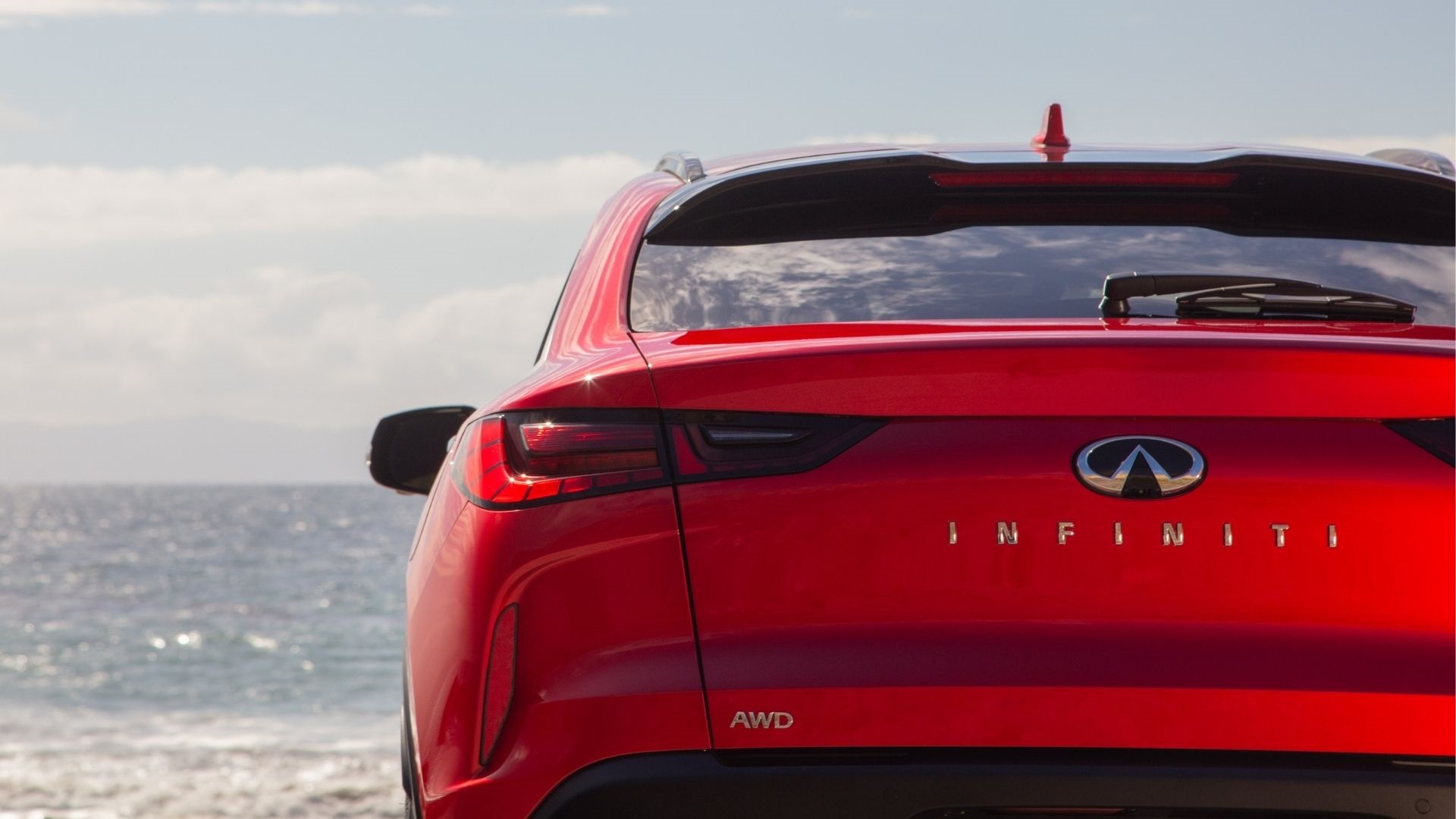

They are a six-hour drive apart from each other but there is a world of difference between Tokyo and Kyoto, Japan. According to Taisuke Nakamura, head of Infiniti Design, the differences between the two cities describes very well the contrast between Nissan design and Infiniti design. Tokyo, the current capital, is a modern, densely-packed metropolis of 37 million; Kyoto, the capital of the country until the late 1800s, a smaller classical city of 1.5 million. Tokyo is metal and sprawling blocks and Kyoto is traditional wooden houses, gardens, and Buddhist temples. And Japan’s Shinkansen high-speed rail network connects the two inextricably-linked locations.
For those who see Infiniti as Nissan with an Infiniti badge slapped on, take a closer look. While they do share some approach to general design philosophies, they’re heading down different roads. In the case of Infiniti’s 2022 QX55, it’s going back to its roots and pulling inspiration from what they call “the original coupe SUV”: the FX.

If you remember, the FX was a rounded revolution between a world of bland, boxy SUVs and sexy coupes. It was based on the platform of the 350Z, which explains why it was so light on its feet, and even shared the 3.5-liter V6 from the two-seater. Think about that: how many SUVs can you think of that are based on a sports car? Not many. The FX was also available with a 4.5-liter V8 engine lifted straight from the Q45 sedan.
Interestingly, it was another Nakamura–Shiro, no relation to Taisuke–who designed the FX, along with the Q50 and several others. Shiro Nakamura integrated Japanese culture liberally into his designs, using motifs from samurai swords and Kabuki symbols. It’s quite obvious that Japanese culture is built into Infiniti designs, says the current designer.
For the new QX55, Nakamura looked to origami (folded paper) for inspiration on the grille, and unique, repeated patterns that meet at 45-degree angles like a kimono. It’s not as if the average buyer will notice these touches. Or–let’s be honest–even care. But your subconscious mind will notice in the same way you are drawn to particular works of art.

Nakamura has been in this job as head of design since 2019, and has worked for Nissan and Infiniti for the last 20 years. He says they’re trying to be more provocative; model by model, they’re doing things a little differently. Maybe Nissan and Infiniti are moving closer together in their approaches.
Aside from the conspicuous absence of the crescent-cut rear pillars that were a design standby, the 2022 QX55 is built on what Nakamura calls clear simplicity. The vision for this crossover was based on the idea of using less to portray more in tandem with the concept of Ma, which translates to “the space in between.” It’s in the same family of what artists and graphic designers call white space and when it comes to sculpting a car in clay, that negative space is an important design element.

According to author Kiyoshi Matsumoto, the meaning of Ma is clear from its kanji symbol. “Ma combines door 門 and sun 日. Together these two characters depict a door through the crevice of which the sunlight peeps in 間,” he wrote. I took Japanese for a year when I was in college, and my experience was that the language was achingly beautiful and stumblingly difficult. Each kanji, katakana, and hiragana is a piece of art in itself.
If the QX55 drives as meticulously as it was designed, it’s going to be a winner.
Got a tip? Want to talk about design styles? Comment or send the writer a note: Kristin.shaw@thedrive.com